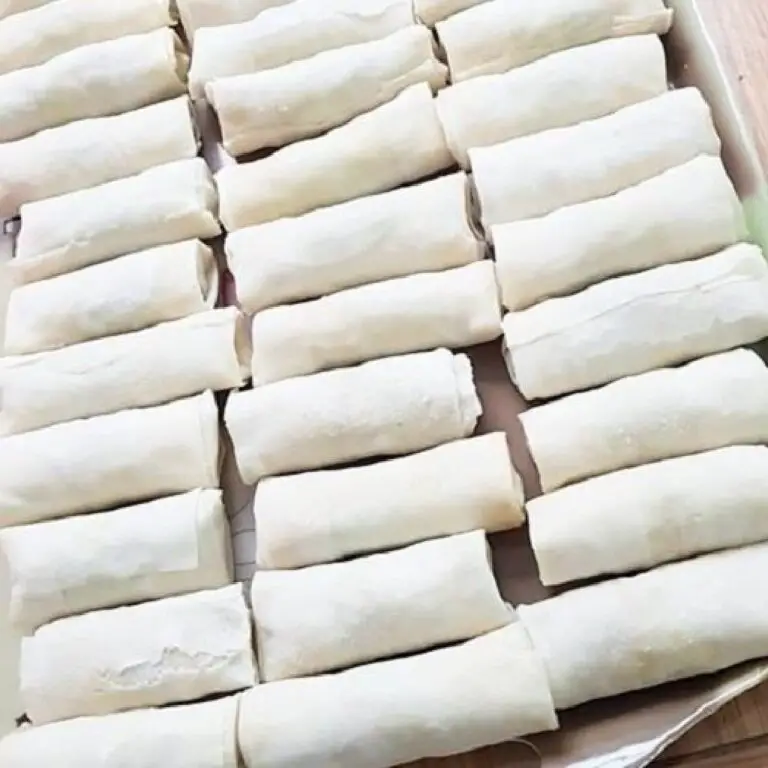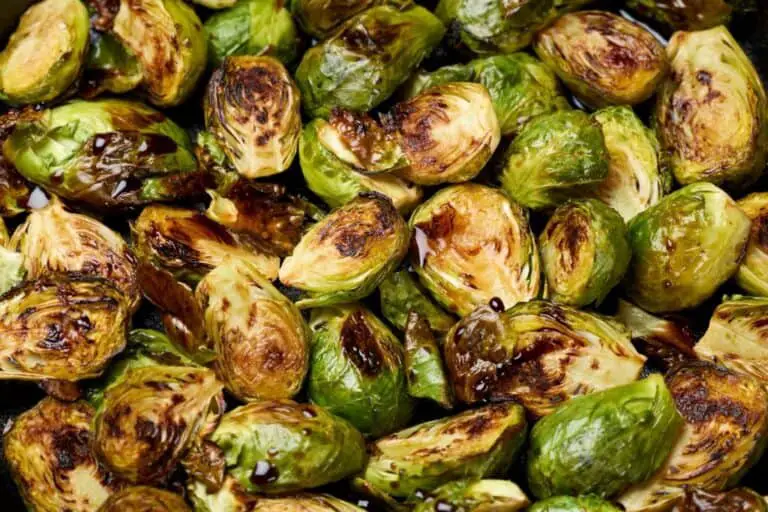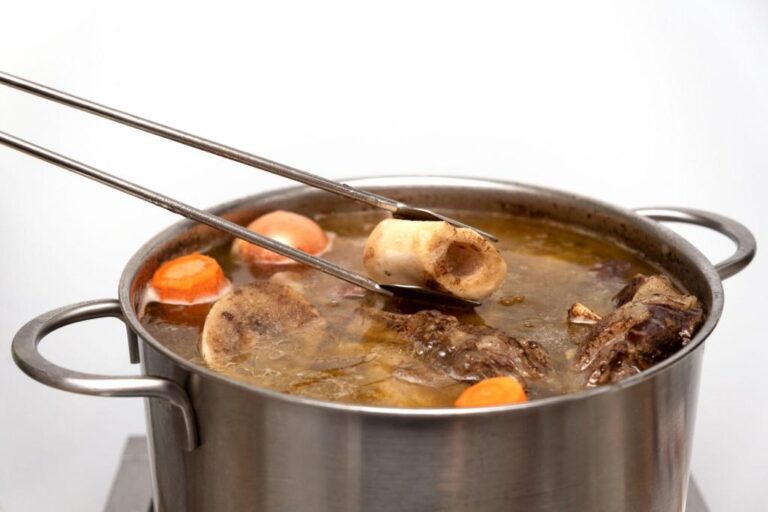How to Freeze Acorn Squash Whole Without Blanching to Retain Freshness
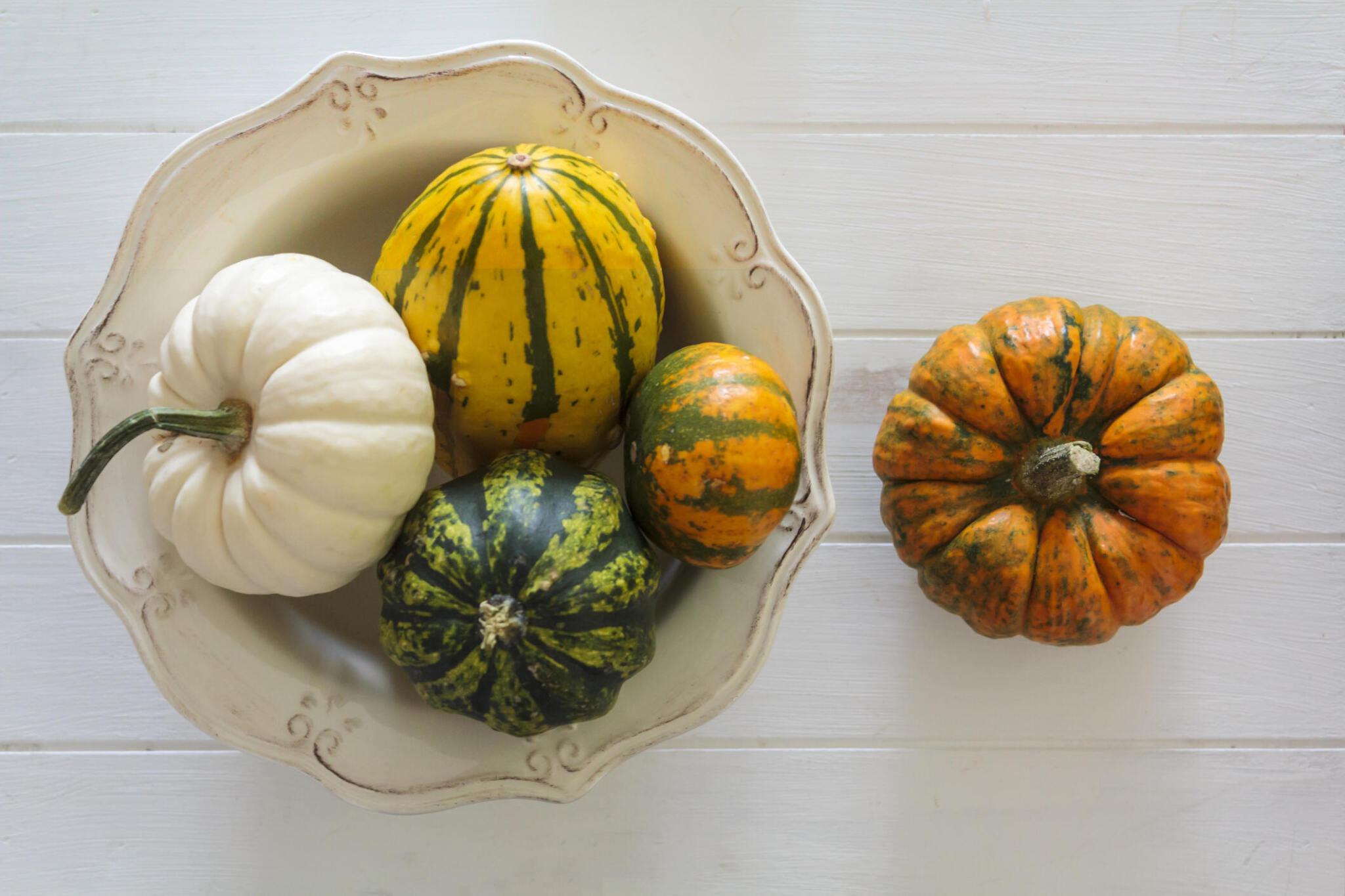
As the vibrant leaves of autumn fall and the air turns crisp, the humble acorn squash takes center stage on our dinner tables. Its sweet, nutty flavor embodies the essence of the season, making it a cherished ingredient in countless fall and winter recipes.
But what if you have an abundance of this delectable squash and want to preserve its freshness for future use without the hassle of blanching?
The answer lies in a culinary secret: freezing acorn squash whole without blanching. By preserving these gourds in their unaltered state, you can capture the essence of fall and enjoy their velvety texture and rich flavor year-round.
In this guide, we unveil the art of freezing acorn squash without blanching—a process that retains every nuance of their natural taste and freshness. Do not bother with the time-consuming blanching methods anymore. Come with us on a journey to keep the essence of fall in your freezer.
Let’s learn how to freeze acorn squash whole while maintaining its natural, farm-fresh appeal.
Introduction to Acorn Squash
Acorn squash, with its vibrant orange hue and sweet, nutty flavor, has secured its place as a beloved vegetable in the world of culinary delights. Whether roasted, mashed, or pureed into a velvety soup, acorn squash has graced our tables and tantalized our taste buds for generations.
Acorn squash is a versatile ingredient that can be used in various recipes, such as stuffed acorn squash. The acorn squash plant is easily grown, and the fruit is ready to be harvested about 85 days after germination.
The English word “squash” comes from a Native American word, and squash wasn’t introduced to Europeans until the 16th century, when Indigenous Americans traded it to them.
If you want to freeze acorn squash, you can do so raw or cooked, but the tough, inedible skin must be removed and the flesh cut into smaller pieces beforehand.
| Find out: Is Acorn Squash a Starchy Vegetable? |
Benefits of Freezing Acorn Squash Whole
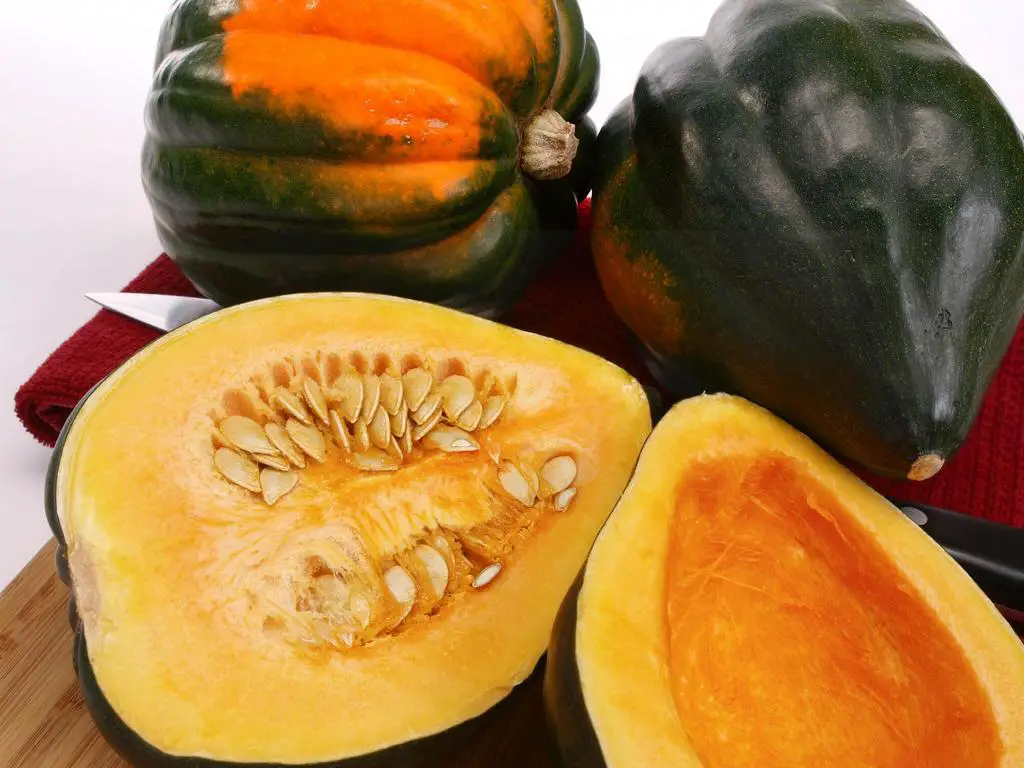
Freezing raw acorn squash involves removing the exterior skin, cutting the squash into smaller pieces, and then transferring them to a freezer-safe container once frozen. Cooked acorn squash can be mashed and stored in a freezer-safe container.
Freezing acorn squash whole is an excellent method because it retains the squash’s original taste and texture. Unlike blanching, which involves partially cooking the squash before freezing, this method allows you to enjoy acorn squash as if it were freshly harvested, even after it has spent months in your freezer.
Freezing acorn squash without blanching may sound unconventional, but it comes with a host of benefits that are worth exploring. Let’s uncover why this method is gaining popularity among home cooks:
1. Fresher Flavors
Unlike blanching, which involves exposing the squash to high temperatures, freezing acorn squash whole preserves its original flavor and texture. When properly done, the frozen squash retains that irresistible nuttiness, making it perfect for a wide range of recipes.
2. Nutrient Retention
Blanching can lead to the loss of some nutrients, but freezing without blanching helps maintain the nutritional integrity of the squash. You’ll still enjoy the health benefits of this vitamin-rich vegetable.
3. Time-Saving
Blanching requires extra steps and time in the kitchen. When you freeze acorn squash whole, you skip the blanching process, saving precious minutes for other culinary endeavors.
Now that we’ve established the advantages, let’s embark on the journey of freezing acorn squash whole.
Selecting and Preparing Acorn Squash
Choosing the Perfect Squash
The first step to freezing acorn squash whole begins with selecting the right squash. Follow these tips to ensure you pick the cream of the crop:
| Criteria | What to Look For |
| Appearance | Choose squash with smooth, unblemished skin. |
| Color | Look for a deep green or orange hue, depending on maturity. |
| Weight | Opt for a squash that feels heavy for its size. |
| Stem | Ensure the stem is intact and not shriveled. |
| Size | Select squash of uniform size for consistent freezing. |
| Read: What Does White Acorn Squash Taste Like? |
Cleaning and Preparing the Squash
Once you’ve chosen your acorn squash, it’s time to prepare it for freezing. Follow these simple steps:
- Wash Thoroughly: Rinse the squashunder cold running water to remove any dirt or debris from the skin.
- Dry Completely: Pat the squash dry with a clean kitchen towel or paper towels. Ensure there is no moisture left on the surface.
- Trim the Ends: Using a sharp knife, carefully trim off both ends of the squash. This step helps ensure even freezing.
- Leave the Skin: Unlike some other squash varieties, you can freeze acorn squash whole with the skin on. The skin adds flavor and nutritional value, so there’s no need to peel it.
With your squash cleaned and prepped, let’s move on to the essential equipment and supplies you’ll need.
Equipment and Supplies Needed
Before you embark on the freezing process, gather the following items to ensure a smooth experience:
| Item | Purpose |
| Acorn Squash | The star ingredient, of course! |
| Sharp Knife | For trimming ends and slicing if desired. |
| Cutting Board | A sturdy surface for safe food preparation. |
| Freezer Bags or Containers | To store the frozen squash. |
| Plastic Wrap | If using freezer bags, for added protection,. |
| Marker | For labeling containers with freezing date. |
| Baking Sheet | Optional, for flash freezing if space allows. |
Each of these items plays a crucial role in the freezing process, ensuring your acorn squash remains fresh and delicious.
Step-by-Step Freezing Process
Now, let’s dive into the step-by-step guide to freezing acorn squash whole without blanching. Follow these instructions for a successful freezing experience:
- Prepare Your Squash: Begin by washing and drying your acorn squash thoroughly. Trim off both ends, but remember to leave the skin intact.
- Slice or Leave Whole (Optional): Depending on your preference and the available freezer space, you can freeze your acorn squash whole or slice it into smaller portions. Slicing may be more convenient for smaller households or when you want to use specific quantities in recipes later.
- Flash Freezing (Optional): If you’ve chosen to slice the squash, consider flash freezing individual pieces on a baking sheet for a couple of hours. This prevents them from sticking together when stored in bags or containers.
- Pack for Freezing: Place the whole squash or sliced pieces into freezer bags or containers. If using bags, consider wrapping the squash in plastic wrap first to minimize contact with air, which can cause freezer burn.
- Label and Date: Use a marker to label each bag or container with the date of freezing. This helps you keep track of freshness.
- Remove Air: If using freezer bags, gently press out excess air before sealing to prevent freezer burn.
- Store in Freezer: Place the bags or containers in the coldest part of your freezer. Ensure they lie flat to save space and allow for even freezing.
- Enjoy Your Frozen Acorn Squash: Your acorn squash is now ready for long-term storage. You can keep it in the freezer for up to 8-12 months.
Storage and Labeling
Proper Storage Containers
When it comes to storing frozen acorn squash, choosing the right containers is crucial to maintaining quality. Here are your options:
| Container Type | Advantages | Considerations |
| Freezer Bags | Easy to store and stack in the freezer. | May not provide as much protection against freezer burn. |
| Freezer Containers | Offer better protection against freezer burn. | Take up more space in the freezer. |
| Vacuum Sealed Bags | Excellent for long-term storage. | Requires a vacuum sealer machine. |
Your choice of container depends on your freezer space and how long you plan to store the frozen squash. Vacuum-sealed bags are ideal for extended storage, while freezer containers are convenient for smaller quantities.
Labeling for Organization
To keep track of your frozen acorn squash, proper labeling is essential. Here’s what to include in each container:
- Date of Freezing: Write down the date when you froze the acorn squash. This helps you prioritize older batches.
- Quantity: Note the number of squash pieces or portions in the container. This information is handy when planning meals.
- Cooking Instructions: If you have a specific recipe in mind, jot down any cooking instructions or reminders directly on the container.
Efficient Freezer Organization
To make the most of your freezer space and ensure efficient organization, consider the following tips:
- First In, First Out (FIFO): Arrange your frozen acorn squash containers so that the oldest ones are at the front for easy access. This ensures you use them before the newer batches.
- Labeling on the Lid: If you have limited labeling space on your containers, label the lids instead. This way, you can quickly identify the contents without rummaging through your freezer.
- Storage Shelves or Bins: Use shelves or bins within your freezer to categorize different foods. Allocate a specific area for your frozen acorn squash to prevent it from getting buried beneath other items.
- Regular Inventory Checks: Periodically review the contents of your freezer to keep track of what you have and what needs to be used soon. This prevents forgotten treasures from accumulating.
With your frozen acorn squash properly stored and organized, you’re ready to embark on the next step: thawing and cooking.
Thawing and Cooking Frozen Acorn Squash
Now that you have your frozen acorn squash ready for use, let’s explore the safe thawing and cooking methods that will bring out the best in this flavorful vegetable.
Thawing Frozen Acorn Squash
When it comes to thawing frozen acorn squash, it’s essential to do it safely to preserve its texture and flavor. Here are a couple of methods to consider:
1. Refrigerator Thawing
- Place in the Fridge: Transfer the frozen squash from the freezer to the refrigerator. Allow it to thaw slowly over 24 to 48 hours. This method is the safest and results in the best texture.
- Use within 1-2 Days: Once thawed, use the squash within 1-2 days for optimal freshness.
2. Cold Water Thawing
- Submerge in Cold Water: If you need to speed up the thawing process, place the sealed squash bag or container in a large bowl of cold water. Change the water every 30 minutes to maintain a safe temperature.
- Cook Immediately: As soon as the squash is thawed, cook it promptly. Do not refreeze.
Cooking Methods for Acorn Squash
The beauty of frozen acorn squash lies in its versatility. You can prepare it in various ways to suit your culinary preferences. Here are some cooking methods to consider:
- Roasting: Toss thawed acorn squash with olive oil, salt, and pepper, and roast it until it’s caramelized and tender. Add herbs or spices for extra flavor.
- Mashing: Boil or steam thawed squash until soft, then mash it with butter, brown sugar, and spices for a creamy side dish.
- Soups and Stews: Add chunks of frozen acorn squash directly to soups and stews for a hearty and nutritious addition.
- Grilling: Slice thawed acorn squash and grill it for a smoky, charred flavor. Brush with your favorite marinade for extra taste.
- Purees: Blend thawed squash into a smooth puree and use it as a base for sauces, dips, or baby food.
- Baking: Incorporate thawed acorn squash into baking recipes like muffins, bread, or casseroles for a delightful twist.
With these cooking methods in mind, you can enjoy the deliciousness of acorn squash year-round, whether you’re preparing a comforting side dish or experimenting with new recipes.
Alternative Preservation Methods than Freezing
While freezing acorn squash whole without blanching is a fantastic way to retain freshness, it’s not the only preservation method for acorn squash available. Let’s explore some alternatives:
1. Canning
Canning is an excellent preservation method for acorn squash if you prefer to store it in jars. Here’s a basic guide to canning acorn squash:
- Peel, seed, and cube the squash.
- Pack the squash into sterilized canning jars.
- Add hot water or a syrup solution (for a sweeter taste) to the jars.
- Process the jars in a boiling water bath or pressure canner, following safe canning guidelines.
Canned acorn squash can last for up to a year in your pantry, providing a convenient option for quick meals.
2. Drying
Drying acorn squash is an effective way to preserve it for the long term. Follow these steps:
- Peel and seed the squash, then slice it into thin strips or rings.
- Arrange the slices on a dehydrator tray or in an oven on low heat.
- Dry until the squash becomes brittle and has no moisture left.
- Store the dried squash in airtight containers in a cool, dark place.
Dried acorn squash can be rehydrated for use in soups and stews or ground into a powder for seasoning.
3. Pickling
If you enjoy the tangy flavors of pickled vegetables, consider pickling acorn squash. Here’s a quick pickling recipe:
- Slice the squash into thin rounds or strips.
- In a saucepan, combine vinegar, water, sugar, salt, and your choice of spices.
- Bring the brine to a boil, then pour it over the squash in sterilized jars.
- Seal the jars and refrigerate for a few days before enjoying.
Pickled acorn squash adds a delightful zing to salads, sandwiches, and charcuterie boards.
Creative Ways to Use Frozen Acorn Squash
Now that you’ve mastered the art of freezing acorn squash whole without blanching and explored alternative preservation methods, let’s dive into the exciting world of creative recipes and meal ideas using this versatile ingredient.
1. Acorn Squash Soup
Puree thawed acorn squash with broth, spices, and a touch of cream for a velvety and comforting soup. Garnish with toasted seeds or croutons.
2. Stuffed Acorn Squash
Cut the thawed acorn squash in half, scoop out the seeds, and stuff it with a mixture of quinoa, vegetables, and cheese. Bake until tender for a hearty and nutritious meal.
3. Acorn Squash Pancakes
Blend thawed acorn squash into your pancake batter for a delightful twist on a classic breakfast favorite. Top it with maple syrup and a dollop of yogurt.
4. Acorn Squash Risotto
Add diced, thawed acorn squash to your risotto for a creamy and flavorful side dish. Stir in Parmesan cheese and fresh herbs for added richness.
5. Acorn Squash Smoothie
Combine thawed acorn squash with Greek yogurt, honey, and a dash of cinnamon for a unique and nutritious smoothie.
6. Acorn Squash Pizza
Use thawed acorn squash as a pizza topping along with caramelized onions, goat cheese, and arugula for a gourmet twist on pizza night.
7. Acorn Squash Pasta
Toss diced thawed acorn squash with cooked pasta, olive oil, garlic, and sage for a simple yet elegant pasta dish.
8. Acorn Squash and Sausage Skillet
Sauté sliced thawed acorn squash with Italian sausage, onions, and bell peppers for a hearty and flavorful one-pan meal.
9. Acorn Squash Hummus
Blend thawed acorn squash into your favorite hummus recipe for a creamy and slightly sweet dip.
10. Acorn Squash Dessert
Create a luscious dessert by blending thawed acorn squash with cream cheese, sugar, and spices to make a delectable pie or cheesecake filling.
11. Sausage and Kale Stuffed Acorn Squash
Most veggies shine when they’re simply dressed and slightly adorned. A light drizzle of olive oil and simple seasonings of salt, pepper, and herbs accompany sausage and kale stuffed acorn squash.
The versatility of frozen acorn squash opens up a world of culinary possibilities. Experiment with these creative ideas, and let your taste buds savor the magic of this preserved ingredient.
Conclusion
In this guide, we’ve explored the art of freezing acorn squash whole without blanching, unlocking a world of culinary possibilities while preserving the freshness and nutrition of this delightful vegetable. With the right selection, preparation, equipment, and careful freezing, you can enjoy the flavors of acorn squash year-round. Next time you spot a bountiful harvest, don’t hesitate to freeze some for those future cozy meals and delectable dishes. Now that you’ve mastered this technique, you’re well on your way to savoring acorn squash goodness at any time of the year.
FAQs
Can I freeze acorn squash without blanching?
Yes, you can freeze acorn squash without blanching it. Roasting it first enhances its flavor and texture before freezing.
How long can I store frozen acorn squash?
You can store frozen acorn squash for up to 12 months in a properly sealed container or freezer bag.
Are there any safety concerns when freezing acorn squash?
Safety concerns are minimal, but ensure proper packaging to prevent freezer burn or moisture loss.
Can I use frozen acorn squash in soups and stews?
Absolutely! Frozen acorn squash works well in soups and stews, adding a delightful flavor.
Can I freeze acorn squash with the skin on?
Yes, you can freeze acorn squash with the skin on, but it’s recommended to wrap it in foil or plastic wrap to protect the quality.
How can I prevent freezer burn when storing acorn squash?
Prevent freezer burn by ensuring your squash is well-wrapped, airtight, and free from moisture before freezing.

